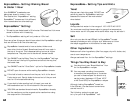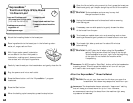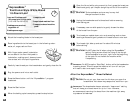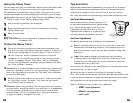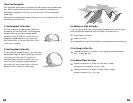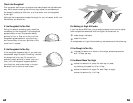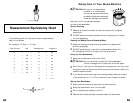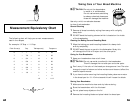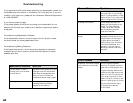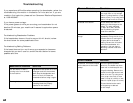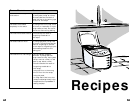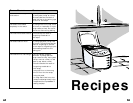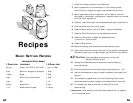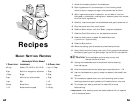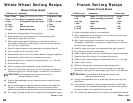
2322
Taking Care of Your Bread Machine
☞
C
AUTION
:
Do not put the breadmaker
in water or in a dishwasher.
Do not use benzene, scrubbing
brushes or chemical cleaners as
these will damage the machine.
Use only a mild, non-abrasive cleanser
to clean the breadmaker.
General Cleaning
1
Remove all bread crumbs by wiping them away with a slightly
damp cloth.
2
DO NOT bend the heating element which is located on the inside
of the breadmaker.
Cleaning the Baking Pan and Kneading Blade
1
Wipe the baking pan and kneading blade with a damp cloth
and dry completely.
2
DO NOT wash the pan or parts in the dishwasher. Surely this
will damage the finish of the pan and the other parts.
Caring for Your Breadmaker
1
Keep your breadmaker clean at all times.
☞
C
AUTION
:
Do not use metal utensils with the breadmaker.
This will damage the non-stick pan and other parts.
2
Don’t worry if the color of the bread pan changes over time. The color
change is a result of steam and other moisture and does not affect the
machine’s performance.
3
If you have trouble removing the kneading blade, place warm water
in the bread pan for 10 – 15 minutes and this will loosen the blade.
Storing Your Breadmaker
1
Make sure the machine is clean and dry before storing.
2
Store the breadmaker with the lid closed.
3
Do not place heavy objects on the lid.
4
Remove the kneading blade and place inside the bread pan.
The following chart will help you convert measurements
used in the recipes.
For example: 1/2 Tbsp. = 1-1/2 tsp.
Fluid Ounce(s) Cup Tablespoon(s) Teaspoons
8=1=16=48
7 = 7/8 = 14 = 42
6 = 3/4 = 12 = 36
5 = 5/8 = 10 = 30
4 = 1/2 = 8 = 24
3 = 3/8 = 6 = 18
2 = 1/4 = 4 = 12
1 = 1/8 = 2 = 6
1=3
1/2 = 1-1/2
Measurement Equivalency Chart



